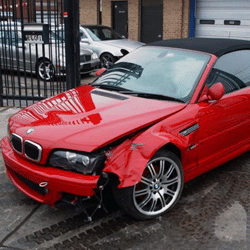You’re running thirty minutes late on your next appointment but traffic isn’t doing you any favors. You’re carving a path through the city, but when a yellow light flashes on an upcoming intersection, you’re forced to make a very important decision – do you stop for it, or do you run it?
Running red lights are a serious issue, particularly in highly populated urban areas. While the decision to run a red light is made within a fraction of a second, its repercussions are often permanent.
You’re forced into a risk vs. reward scenario, but if you take the time to look at the statistics involved, you’ll realize that the risks greatly outweigh the rewards.
The Story behind the Statistics
According to the Insurance Institute for Highway Safety, red light running is one of the leading causes of urban crashes. In a study conducted back in 2005 highlighted that 165,000 injuries and more than 800 fatalities in the United States were caused by red light violations. Since then, the casualties of red light running have continued despite advances in intersection monitoring stricter road guidelines.
But what most motorists tend to overlook is the kind of impact red light violations have on the public funds. In fact, research has shown that the financial repercussions of red light caused accidents add up to more than $14 billion every year, making violations not only a liability to motorists and pedestrians, but to public finances.
Speed vs. Safety
Studies have shown that red light running is often cause by one of two things:
1. Running Late –Running late takes the top slot when it comes to motivations behind red light violations. Rising population numbers and urban congestion has made tardiness a more prevalent issue in urbanized areas, prompting more incidents of red light violations. While more effective intersection monitoring has managed to curb incidents somewhat, studies have shown that violating motorists hardly ever take such protocols into account when running a red light.
2. Distracted Drivers – However, a newly published study commissioned by the National Coalition for Safer Roads discovered that an estimated 12% of red light violations are from distracted drivers. When put into the context of the entire United States, these distracted drivers account for as many as 7.3 million red light violations a year. While these violations may not necessarily be intentional, these situations are no less dangerous than any other red light violation. These are incidents are thought to be caused by cell phone usage or simple lack of road awareness. It’s also fairly common for motorists to follow behind a lead car, without looking at the traffic light
But studies have shown that, while violating motorists believe they are shaving minutes from their travel time, they are effectively only saving seconds. When you’re running thirty or even five minutes late, a 45 second traffic stop makes little difference when you’re already ahead of the pack. When put into perspective, the speed of running a red light just isn’t worth the risks involved.
At the end of the day, driving responsibly means driving safe, not only for yourself, but for those around you.




 Follow
Follow

